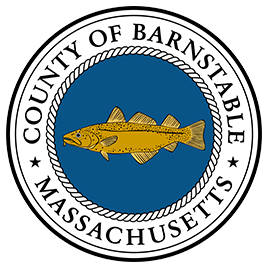Temporary Pickup/Loading Zones
![]() With social distancing requirements forcing businesses to reconfigure their sites and transaction methods, many will be utilizing takeout or curbside pickup to keep selling their goods and services. Establishing temporary loading or pickup zones can help make the process of picking up items easier and more efficient. Clearly marked zones help customers know where to park for picking up items and ensures that space is readily available and not taken up by longer-term parking. Communities might consider provisions allowing restaurants and stores to establish temporary loading zones for curbside pickup of goods or food quickly, without waiting to schedule regulatory board review. For example, towns might consider providing a simple and free online form businesses can fill out to let the town know they are establishing a temporary loading or pickup zone rather than having to request an official permit for the zone. Public safety officials, Department of Public Works, and/or planning staff could sign-off on the temporary pickup/loading area plans through administrative review. For longer-term parking or pickup area changes (beyond temporary COVID-19 measures) approval by relevant boards may be necessary.
With social distancing requirements forcing businesses to reconfigure their sites and transaction methods, many will be utilizing takeout or curbside pickup to keep selling their goods and services. Establishing temporary loading or pickup zones can help make the process of picking up items easier and more efficient. Clearly marked zones help customers know where to park for picking up items and ensures that space is readily available and not taken up by longer-term parking. Communities might consider provisions allowing restaurants and stores to establish temporary loading zones for curbside pickup of goods or food quickly, without waiting to schedule regulatory board review. For example, towns might consider providing a simple and free online form businesses can fill out to let the town know they are establishing a temporary loading or pickup zone rather than having to request an official permit for the zone. Public safety officials, Department of Public Works, and/or planning staff could sign-off on the temporary pickup/loading area plans through administrative review. For longer-term parking or pickup area changes (beyond temporary COVID-19 measures) approval by relevant boards may be necessary.
Considerations
- Temporary pickup zones are especially important for Main Street and downtown businesses that lack adjacent parking lots
- There may be impacts on parking or traffic circulation, depending on the site
- The Department of Public Works may be involved or needed to install appropriate signage on public streets
- A town could offer signage and temporary permits with reduced or no fees
- Establishing consistent time limits in loading or pickup zones throughout town may be helpful
- As with other strategies, consistent signage throughout a community denoting pickup zones can increase efficiency
Sample administrative review checklist for temporary pickup zones
- Completed application or form with a description of where the temporary pickup or loading zone will be and how it will be marked/signed if on private property
- Completed application or form with a detailed sketch of the proposed temporary pickup/loading zone with sufficient context to show what public streets or parking areas will be impacted, how the area will be marked/signed, and the hours of operation if the proposed temporary pickup area will be on a public street or in a public parking area
- Temporary pickup or loading zones will not block entrances, exits, fire lanes, hydrants, drive aisles, back-up areas, or pedestrian walkways
- Safe traffic circulation will not be negatively impacted on-site or on adjacent roadways
- Handicapped parking and access are not negatively impacted by the proposal
- Time limits for pickup and loading zones are appropriate and consistent with other temporary pickup or loading zones in town
- Signage is clear and consistent with other temporary pickup or loading areas in town if possible
Examples
- Austin, Texas converted some on-street parking spaces into temporary pickup and loading zones, and created an on-line interactive map showing their locations. They also installed temporary signage at those locations, and created a simple way for restaurants to request an evaluation (com).
- Detroit established a temporary program to provide on-street carry-out zones for any existing restaurant that requests one. Restaurants contact the city by filling out a simple on-line application. Additionally, restaurants that apply through the online form are added to a database of restaurants offering takeout.
- The City of Napa created signage for priority pickup areas (under Pickup Priority Sign Program), and an easy application form for businesses to apply for them.
